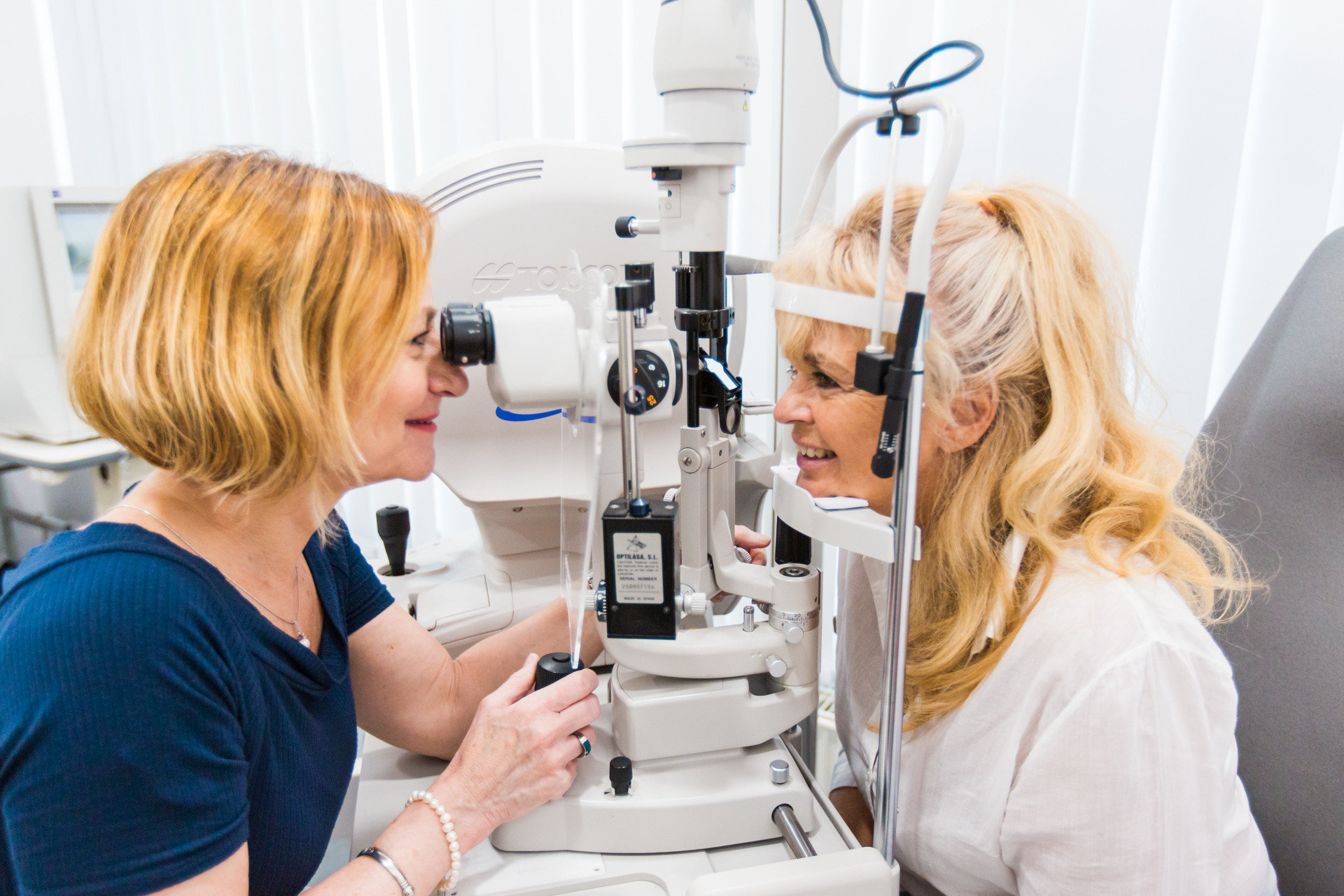
At Rapidus Ophthalmology, intraocular pressure is measured using a non-contact tonometer. During this completely painless examination, the eyes are not touched by the instrument, so no anaesthetic is needed.
A fundus examination is one of the most important ways of checking the health of your eyes, and is therefore part of every eye examination. It is used to assess the condition not only of the eyeball but also of all its protective organs – the eye muscles, the eye socket and the eyelid – and can help to detect many problems.
The fundus is the inner wall of the back of the eyeball, behind the lens. However, we cannot talk about it as a specific anatomical concept, as this area is very detailed. The light rays that enter through the pupil arrive here, and the retina, or optic disc, is also located here, along with the blood vessels that run through it. The central part of the retina is the macula lutea, also known as the yellow spot, which is responsible for sharp vision and colour perception. Another important component is the papilla, or optic nerve head, where the nerve fibres of the retina merge to form the optic nerve. If there is a problem with any of these parts, a fundus examination will reveal it, and more! It can even detect disease in deeper layers.
Because it covers a wide area and involves a lot of detail, it can reveal damage to the optic nerve and the blood vessels that run through it, but it can also show problems in the neuroretina and the macula. It can also highlight the presence of deposits, haemorrhages and blood clots that may be blocking the blood vessels.
The first step in a fundus examination is for the ophthalmologist to apply a dilating eye drop to the patient’s eye, as this will allow them to see the area under examination more accurately and in more detail. This can cause blurred vision for a while after the examination and it is best to avoid bright sunlight, which can disturb the patient. For this reason, activities such as driving or certain jobs should be avoided for several hours.
During the procedure, the patient’s forehead and chin rest on a headrest while the doctor looks at the eyes through the examination device. A slit lamp, an ophthalmoscope or a front lens, which in this case does not touch the patient’s eyes, is used. However, there are cases where it is necessary to insert a contact lens on the anaesthetised eye surface to obtain more information about the condition of the area under examination.
While the slit lamp examination also helps to map the lens and the area in front of the iris, the ophthalmoscope allows the condition of the blood vessels and the optic nerve to be checked within the fundus examination. If the fundus examination results so require, further, different types of examination may be warranted.
In contrast to the above, no dilation of the pupil is necessary when using a fundus camera. In this case, the camera is able to take pictures of the fundus through a smaller pupil. The images are then displayed on the computer screen and used for evaluation.

As mentioned above, a fundus examination may be necessary for each individual complaint, but it can also be just part of the general eye examination. There are, of course, some symptoms which, if detected, should be specifically targeted for examination as soon as possible. This may be when you notice a change in your vision or its sharpness, when you feel pain in your eyes, or when you have a persistent headache for which there is no other explanation. It is also a good idea to have regular check-ups if you have high blood pressure, diabetes, atherosclerosis or glaucoma.